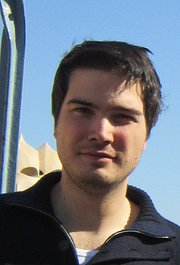-

-
Vasilieos is a member of the specialist adrenal multi-disciplinary team (MDT) at the University Hospital of Birmingham. His specialism is in adrenocortical cancer and he can be heard speaking on this subject from AMEND Information Days via our YouTube Channel.
Antioxidant pathway targeting as a therapeutic approach in adrenocortical carcinoma
Cell metabolism involves a vast network of reactions leading to energy generation and providing essential building blocks. During some of these reactions, toxic oxygen molecules with free electrons (reactive oxygen species, ROS) are generated as by-products. ROS production is particularly prominent within mitochondria, the energy factories of cells. Excessive ROS can cause damage to various parts of the cells (oxidative stress); in severe cases, this may even lead to cell death. To protect themselves against oxidative stress, cells are equipped with an antioxidant machinery (antioxidant pathways) that constantly works to detoxify ROS. This process is particularly crucial for the adrenal cortex, as steroid hormone production (steroidogenesis) is also a major source of ROS within adrenocortical mitochondria.
Nicotinamide Nucleotide Transhydrogenase (NNT) is a mitochondrial enzyme which fuels the core antioxidant pathways, providing them with reducing (detoxifying) power. Recent genetic studies showed that patients who are deficient in NNT develop adrenal failure at infancy or early childhood. In most cases, the adrenal gland is the only organ that is affected by the absence of NNT. This suggests that adrenal cells have a selective sensitivity to NNT loss, presumably because of their high endogenous rates of ROS production which necessitate the existence of robust mitochondrial antioxidant pathways. We therefore postulated that inhibiting NNT will cause selective damage to adrenocortical carcinoma cells, exposing them to lethal levels of oxidative stress.
To explore this hypothesis, we transiently inhibited NNT, interrupting the expression of the corresponding gene in an ACC cell line in the lab. We found that, within the first week, NNT inhibition increased intracellular levels of oxidative stress; this resulted in a pronounced suppression of cell proliferation and higher rates of cell death. Steroidogenesis was paradoxically stimulated by NNT loss. These results were promising, demonstrating anti-tumour effects in this setting. Next, we generated permanent silencing of NNT in the same cell line, in order to investigate the longer-lasting effects of NNT inhibition. After a few weeks, cells managed to adapt to NNT loss, lowering their oxidative stress levels. Cell proliferation remained suppressed, but the effect was attenuated in comparison to what we had observed in the transient knockdown model. In order to understand how cells eventually manage to achieve this partial compensation for NNT loss, we carried out further comprehensive analysis looking at the expression of all genes (RNA sequencing), as well as a wide panel of molecules that are involved in cell metabolism (metabolites). We found that cells with permanent NNT loss alter the way in which they process damaged proteins, and they increase the production of a substance called spermine, which can detoxify ROS (anti-oxidant).
We also used two drugs that inhibit the function of each one of the two main mitochondrial antioxidant pathways (glutathione pathway and thioredoxin pathway) and found that both display anti-tumour activity against this ACC cell line in the lab, especially when used in combination.
Our study provides the first pre-clinical evidence that inhibiting the mitochondrial antioxidant pathways can have anti-tumour effects against ACC, but it also illustrated the plasticity of ACC cells which may allow them to mitigate the initial impact over time. Animal experiments would be required to investigate the effectiveness of such approaches in living organisms.